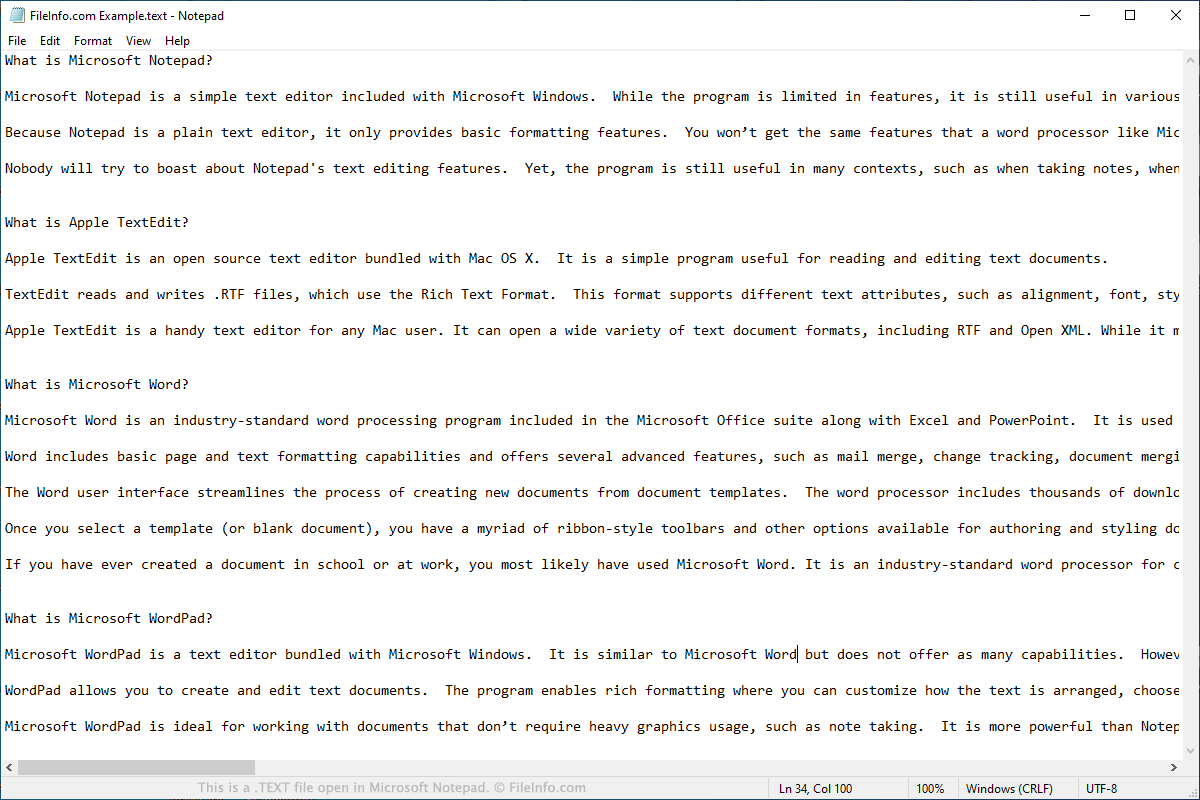
It is important to perform regular saves to prevent your data from being lost. Some programs, such as Microsoft Word, may even automatically save your document at regular intervals using an Autosave function built into the program. Each time you save the document, the contents of the file on the disk are overwritten with the version you have open. Once you have saved a new document and given it a file name, you can save changes as you work by selecting File, Save (or using the keyboard shortcut Command + S).

This will make it easier to move the file to a different location or to send it to someone over email. If you are using Pages (a word processing program) or Keynote (a presentation program similar to Powerpoint) you can choose this option to have your document and all the mutlimedia files used in it saved as one file.
Make txt file on mac movie#
If you do not include the file extension, Windows users may not be able to open the files you send to them from your Mac.Īnother option you may see in the Save As dialog box of some programs allows you to copy audio and movie files into your document by selecting a checkbox. The file extension is used by Windows to associate each file type with a specific program installed on your computer. It is a good idea to include the file extension if you plan to share files with Windows users. Some programs, such as Microsoft Word, have an option to allow you to add a file extension to your file (in Microsoft Word, this option is called Append file extension). You can then use this Finder window to navigate your hard drive until you find the folder where you want to save your file. You can also click on the downward pointing arrow to the right of the Save As field to display a small Finder window. The pull-down menu will also list the most recent locations where you have saved files. In addition to the default save location, you can save a file to another location on your hard drive by using the pull-down menu next to the Where field. For example, iPhoto saves images imported into it in the Pictures folder, while iMovie saves its movie projects in the Movies folder. Each of these folders is used by an iLife program as its default save location. Using the Finder, you can find folders for Documents, Movies, Music, and Pictures on your hard drive. Many of the iLife programs that are installed on all new Macs have a specific folder where they save their files by default. The default location where files will be saved will vary depending on the program you are using. In the Where field, you can select the folder where you want to save your new file. The first time you save a new document these two menu options will work the same way and open up a Save As dialog box where you can enter a file name for your new file in the Save As field.

At a generic level of description, there are two kinds of computer files: text files and binary files.There are two ways to save your work: File, Save and File, Save As. Text files can contain plain text, but they are not limited to such. Text file refers to a type of container, while plain text refers to a kind of content. The created file provides easy access to that stream and is often used in downloads from a website, emailing, and listening to Internet radio. One common use of the M3U file format is creating a single-entry playlist file pointing to a stream on the Internet. M3U is a computer file format for a multimedia playlist.

Such files can be viewed and edited on text terminals or in simple text editors. The name text file refers to a file format that allows only plain text content with very little formatting (e.g., no bold or italic types).


 0 kommentar(er)
0 kommentar(er)
